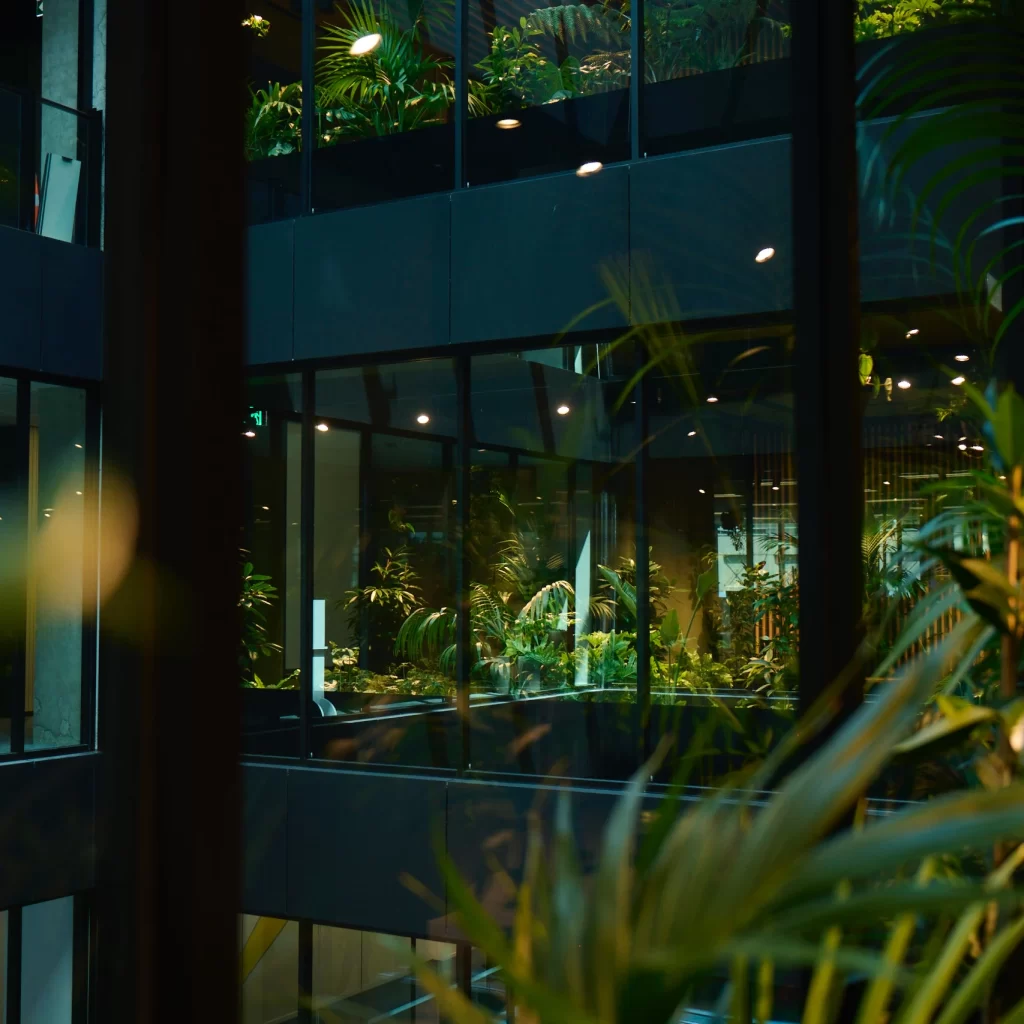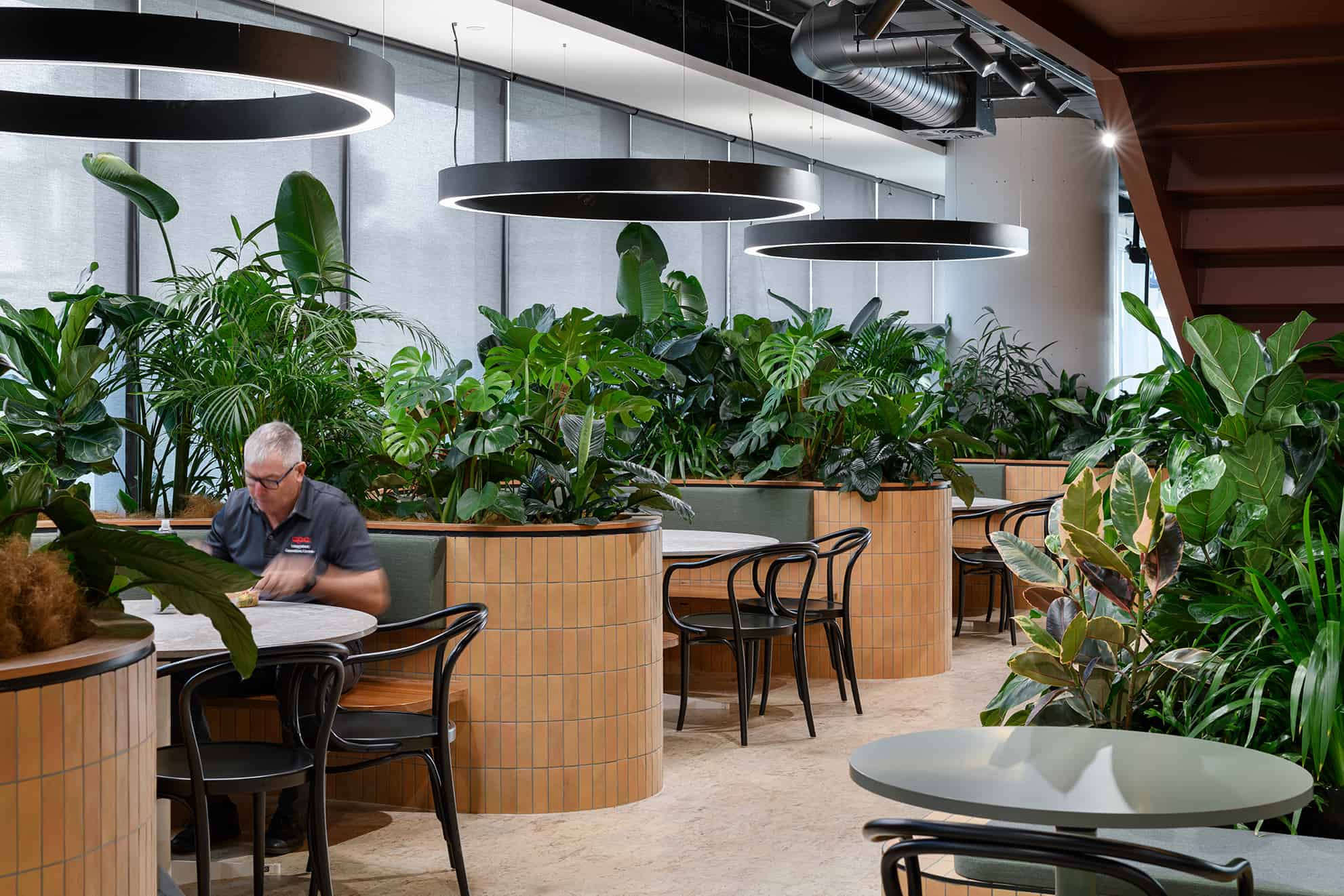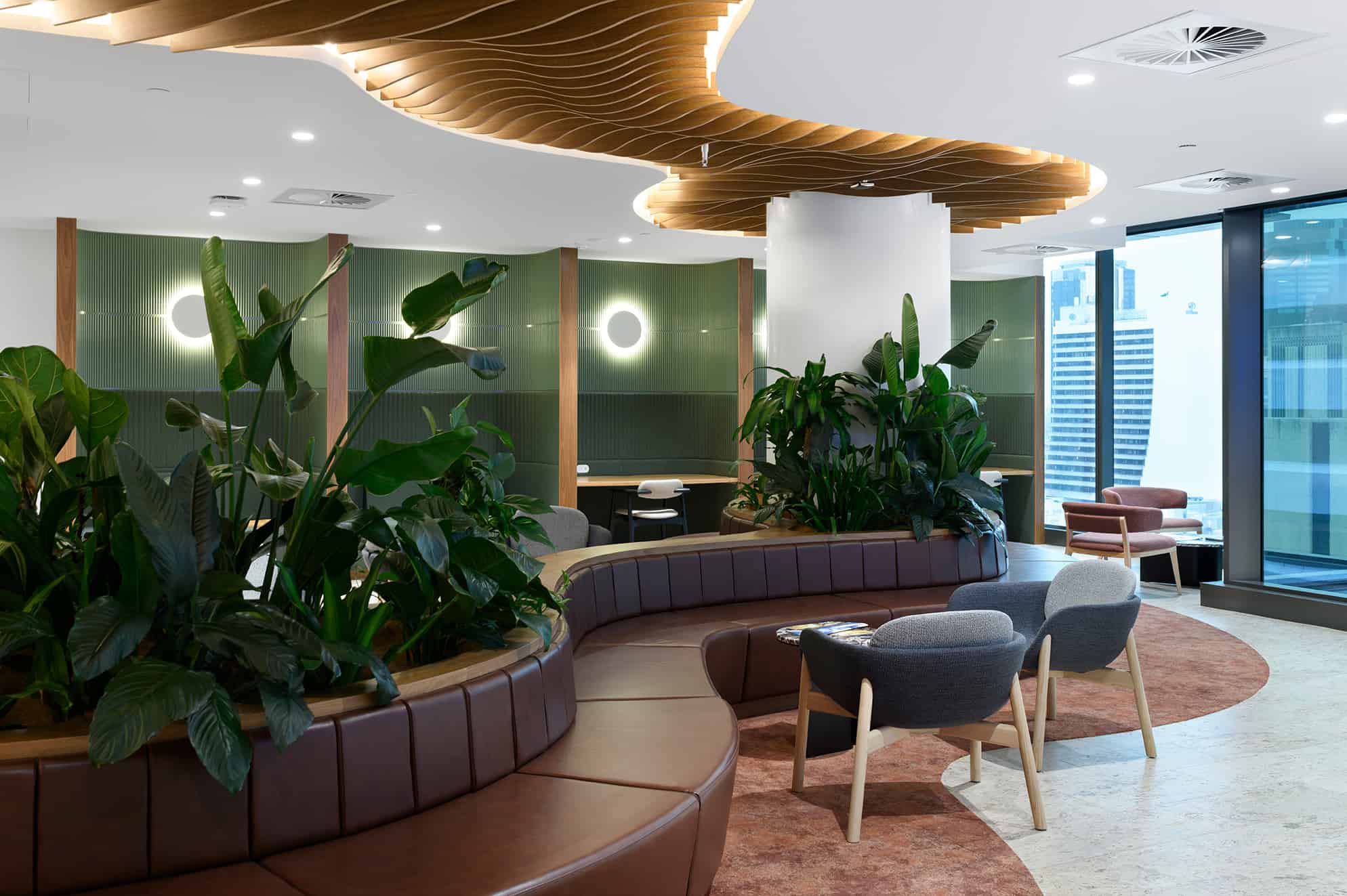05 Jul Seeing the Forest from the Trees: the case for Biophilic Design at work
Picture this: you’re meandering down a winding path. The air is heavy with an earthy fragrance. You can feel the temperature cooling your skin as you move through the rainforest. There’s a mosaic of dappled shadows on the mossy forest floor, created by the light as it peeks through the green canopy above. The background noise dampens. Your heart rate slows. You take a deep breath.
Where did you picture yourself? In the Daintree Rainforest?
What if I told you this experience is a reality for more than 300 employees who work at New Zealand’s biggest litigation firm, in the middle of Auckland’s CBD?
 Meredith Connell Office by Outside In
Meredith Connell Office by Outside In
It’s an impressive example of how biophilic design is becoming a mainstream strategy to support employee wellbeing in the workplace.
Nestled among the Meredith Connell high-rise offices, is a temperature-controlled 2-storey glass terrarium, designed to emulate the native New Zealand rainforest experience. There are meeting rooms and sitting nooks tucked among it, and it’s a place of refuge, reflection, and quiet work for busy lawyers.
 Meredith Connell Office by Outside In
Meredith Connell Office by Outside In
It was the vision of a very forward-thinking CEO who noticed the positive physiological and emotional changes in herself when she took time out in the rainforests of New Zealand’s great walks. She intuitively understood the health and wellbeing benefits humans experience when connected to nature, and she wanted to mimic this phenomenon for her team in their corporate office, enlisting the expertise of Outside In, to create this immersive experience.
While not all organisations are installing 2-storey terrariums (yet!), most have come a long way from the days of no plants, fake plants, or basic green walls, as the impacts of biophilic design in workplaces are studied and better understood.
Research led by Sir Cary Cooper, a Professor of Organizational Psychology and Health at Lancaster University, and leading expert on wellbeing and stress at work, found that employees working in offices that incorporated biophilic design reported:
- 15% higher levels of wellbeing
- 6% higher levels of productivity, and
- 15% higher levels of creativity
than employees working in places devoid of nature and natural elements.
The Japanese call it forest bathing. Others refer to it as green technology. Ryan McQuerry from Outside In refers to his work as interior plantscaping. Whatever you prefer to call it, there’s certainly a growing and measurable case for investing in greenery, sunlight and natural elements in workplace design.
Biophilic design, and specifically plants in the workplace, are not only great for employee wellbeing, performance, and creativity but also have multifunctional benefits from a design perspective. Plants create life and barriers in man-made spaces and their lush greenery softens the edges and absorbs noise in harsh environments.
At COMUNiTI we appreciate there’s an ongoing discussion about the value of plants, given the ongoing operational costs for maintenance or hire. But many of the organisations we are working with prioritise employee wellbeing and want an edge on talent attraction, so they see plants in the workplace as part of a much bigger investment — they can see the forest from the trees, so (excuse the pun!).
 APA Brisbane Office, designed by COMUNiTI
APA Brisbane Office, designed by COMUNiTI
Ryan from Outside In uses a great analogy:
“If you’re in retail, you’re competing with online shopping, so in your physical store, you have to create a destination. You have to invest in that space and create a place where people want to visit and stay. It’s the same in the workplace. How much are organisations willing to pay for things that support employee wellbeing and contribute to reduced sick leave and increased retention rates? When we look at it this way it doesn’t take long to pay back the investment [in bringing nature into the workplace].”
We can’t argue with the fact that when people are happy and comfortable in their workplace they’ll do their best work. And, when workplaces are designed for a sensory experience, as a destination, with biophilia in mind, people have a physical response to their work environment and naturally want to spend time there.

Biophilic design is yet another interesting lens through which we can look at employee value propositions, return-to-the-office initiatives, and the overall human experience at work.
If you want to hear more details about the amazing terrarium at Meredith Connell, or learn more about the latest trends when it comes to biophilic design, tune into my Podcast chat with Ryan McQuerry from Outside In.


